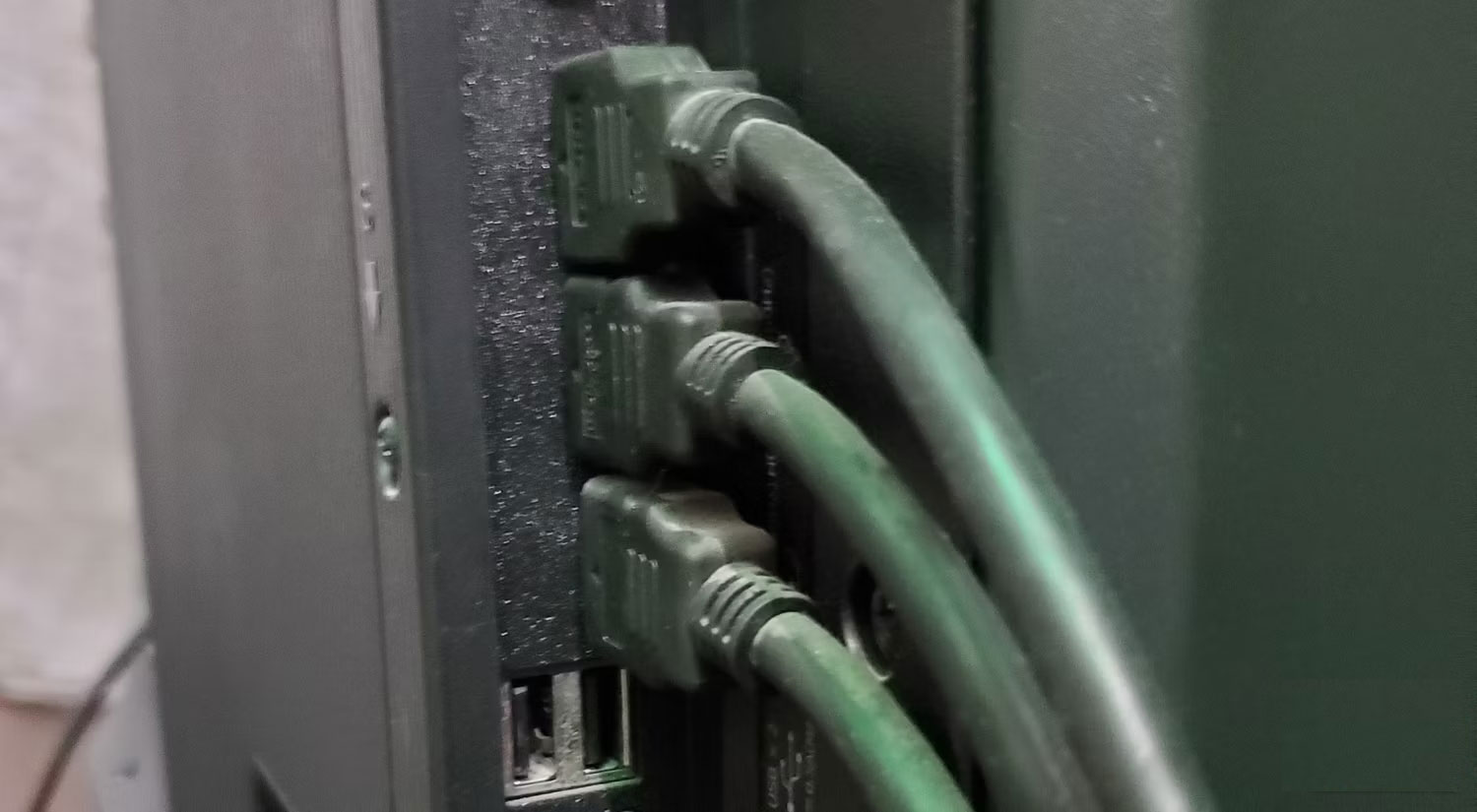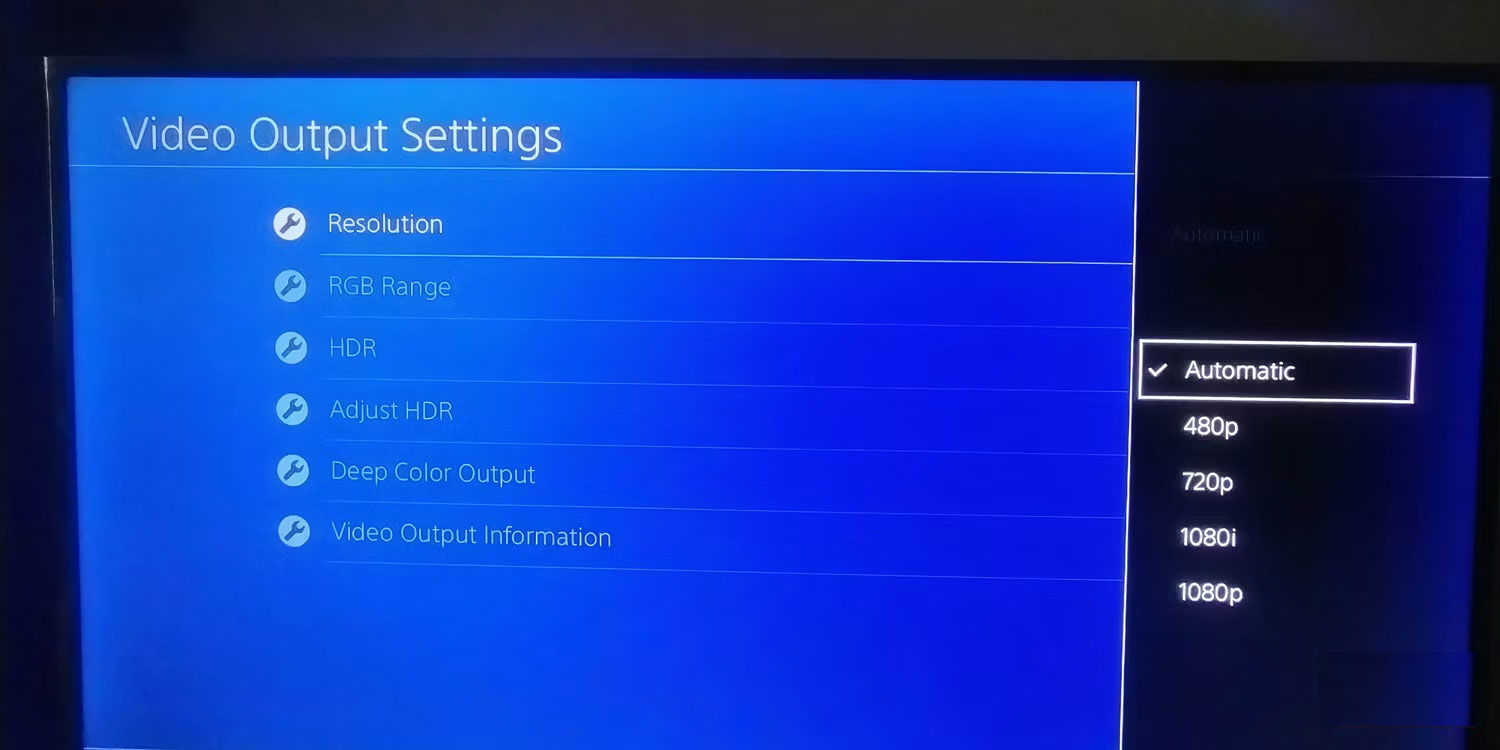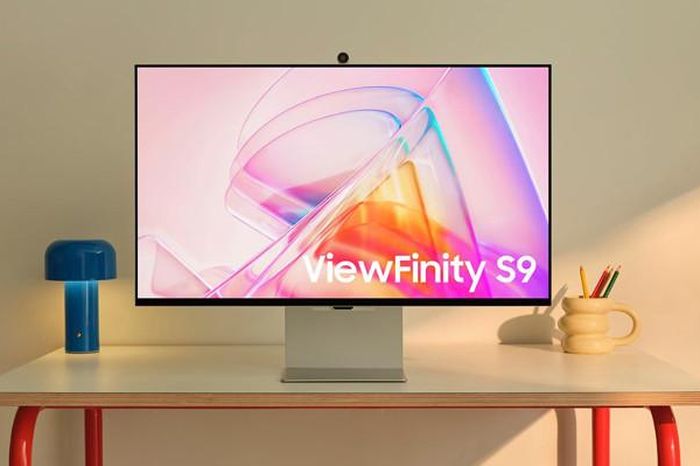Fixed an issue where there was no video signal when the TV was connected via HDMI
1. Unplug the TV
This is the simplest fix, but before diagnosing a TV or source with a faulty HDMI port or motherboard problem, completely unplug the TV from the power source.
Basically, completely removing power from the TV will perform a "soft reset", whereby the TV's components will return to their default state, which may help resolve the problem. Just like when something goes wrong on your PC or laptop, instead of doing an in-depth repair, just turn it off and on again to see if it solves the problem.
In this case, since the TV has a stable power supply, it is best to turn off the power or disconnect it for a moment.
2. Test using another HDMI port

The video signal may not be displayed due to a bad HDMI port. If the TV has multiple HDMI ports, connect the input device to another device.
Sometimes, dust buildup can affect the HDMI connection. Clean the HDMI ports using compressed air, a gentle scrub with a clean toothbrush, and a little isopropyl alcohol.
3. Test with another HDMI cable
A bad HDMI cable could be the culprit why your TV won't play video. Change the HDMI cable to check if this is the cause of the problem.
Make sure you have the correct HDMI cable for the video you are outputting. For example, some 4K TVs that output video at 120Hz may require an HDMI 2.1 cable to function properly. Check your TV's specifications to see if you're using the correct HDMI cable. If you need to upgrade your display, consider an HDMI 2.1 display.
4. Try with another source or screen
Connect another source to the TV via HDMI to check if the issue is limited to the video output device. Also, try plugging in the device and outputting video to another screen. This will give you a clue as to whether the problem lies with the TV or not.
5. Check the video output format
Sometimes, the absence of a video signal on a TV or monitor is due to the video format coming from the source. This may be due to the resolution selected on the output device and TV being different. For example, this can happen if the TV is set to 4K while the output device is set to 1080i.
It may be necessary to connect the source to another monitor to check the video settings.

How to check output format on source
To change the video format your TV receives:
- Open video settings on the source device. You may have to connect your output device to another display.
- Navigate to the resolution option (or similar).
- Try changing these until you find the right option.
You can also experiment with other settings, such as color options, HDR, and HDMI-CEC.
6. Check the intermediate system (if any)
If you are routing the HDMI signal through an intermediary device, such as a home theater system, a video format mismatch may cause the HDMI video not to display. Try changing the video settings on the intermediate device!
7. Try resetting the TV to factory settings
If nothing else works, try factory resetting your smart TV.
Factory resetting the TV will erase all settings. You'll likely lose all your saved logins and downloaded apps, so make sure to have a backup!
Once you've done this, it's worth checking your TV's video settings to make sure everything is set up correctly.
8. What if nothing works?
If nothing else works, try connecting the TV via another input, such as the DVI, VGA, or even RGB connector. Another option is to try a VGA to HDMI converter or conversion tool for other video formats to get the picture on the TV.
A bigger problem could be a malfunctioning motherboard. If nothing works and the TV seems completely useless, you may have to take it to a repair shop to further diagnose the problem. Unfortunately, in many cases, a TV with a damaged motherboard is not worth fixing due to the high cost.
Most cases of no HDMI video signal on a TV can be fixed with a few quick tricks; Other cases may require intensive intervention. If the problem occurs with the TV hardware and your TV is out of warranty, you will have to consider purchasing a new replacement.
You should read it
May be interested
- All things need to know about HDMI 2.1 standard
 previously, we used to get acquainted with many hdmi standards, but today, tipsmake.com will introduce you to hdmi 2.1 and all the things you need to know about this hdmi standard. let's follow it!
previously, we used to get acquainted with many hdmi standards, but today, tipsmake.com will introduce you to hdmi 2.1 and all the things you need to know about this hdmi standard. let's follow it! - How to Connect to TV via HDMI port
 today's tipsmake will show you how to connect different types of video devices (computers, cameras, and gaming devices) via your tv's hdmi port. hdmi (high-definition multimedia interface) is a popular standard used to transmit high-quality digital video and audio between devices. even if the device does not have an hdmi port, you can still connect using a cable or adapter/converter.
today's tipsmake will show you how to connect different types of video devices (computers, cameras, and gaming devices) via your tv's hdmi port. hdmi (high-definition multimedia interface) is a popular standard used to transmit high-quality digital video and audio between devices. even if the device does not have an hdmi port, you can still connect using a cable or adapter/converter. - The 5 best HDMI splitters of 2023
 hdmi splitters serve a very specific purpose: take a single source, such as a tv box, and duplicate the source across two or more displays.
hdmi splitters serve a very specific purpose: take a single source, such as a tv box, and duplicate the source across two or more displays. - What is wireless HDMI? Should I use it?
 wireless hdmi products have been around for nearly a decade, but they haven't really become popular. today, tipsmake.com will work with readers to find out how wireless hdmi works and whether to buy wireless hdmi products without the following article.
wireless hdmi products have been around for nearly a decade, but they haven't really become popular. today, tipsmake.com will work with readers to find out how wireless hdmi works and whether to buy wireless hdmi products without the following article. - What is HDMI eARC?
 hdmi earc is an enhanced version of the arc (audio return channel) protocol that existed in the hdmi standard, serving as a tool to simplify home theater settings.
hdmi earc is an enhanced version of the arc (audio return channel) protocol that existed in the hdmi standard, serving as a tool to simplify home theater settings. - How to Connect HDMI to TV
 this wikihow teaches you how to connect different types of video devices, including computers, cameras, and gaming systems, to your tv's hdmi port. hdmi (high-definition multimedia interface) is a common format for transferring...
this wikihow teaches you how to connect different types of video devices, including computers, cameras, and gaming systems, to your tv's hdmi port. hdmi (high-definition multimedia interface) is a common format for transferring... - Learn about HDMI and HDMI switch
 today, many types of entertainment are provided by hdmi. you no longer have to mess with the scart plug or set up a vga cable. just plug the hdmi cable into the 2 ends of the device!
today, many types of entertainment are provided by hdmi. you no longer have to mess with the scart plug or set up a vga cable. just plug the hdmi cable into the 2 ends of the device! - How to Buy HDMI Cables
 hdmi, short for high definition multimedia interface, has quickly become the standard for digital audio and video connection, as it is the first type of cable that can carry all digital audio and video signals uncompressed over the same...
hdmi, short for high definition multimedia interface, has quickly become the standard for digital audio and video connection, as it is the first type of cable that can carry all digital audio and video signals uncompressed over the same... - What is HDMI? Instructions for connecting devices via HDMI port
 hdmi port helps transfer data from one device to another and retains the original quality. so, what is hdmi? what are the uses?
hdmi port helps transfer data from one device to another and retains the original quality. so, what is hdmi? what are the uses? - Fixed an issue where videos could not be viewed on iOS 10
 there are many reasons why the video cannot be viewed on ios 10. it is possible that one of the reasons that you cannot view the video on your iphone device is because the iphone or the application hangs and does not respond to any. any requirements. the solution to fix this problem is to restart your iphone.
there are many reasons why the video cannot be viewed on ios 10. it is possible that one of the reasons that you cannot view the video on your iphone device is because the iphone or the application hangs and does not respond to any. any requirements. the solution to fix this problem is to restart your iphone.










 6 best applications to install on smart TV
6 best applications to install on smart TV How to fix Netflix error not opening the next episode automatically
How to fix Netflix error not opening the next episode automatically Don't buy a new TV without these 8 features!
Don't buy a new TV without these 8 features! Why are 8K TVs still not really necessary in 2024?
Why are 8K TVs still not really necessary in 2024? 7 things to consider before using your TV as a computer monitor
7 things to consider before using your TV as a computer monitor Enhance your experience with the ViewFinity S9 monitor and T7 Shield portable hard drive
Enhance your experience with the ViewFinity S9 monitor and T7 Shield portable hard drive